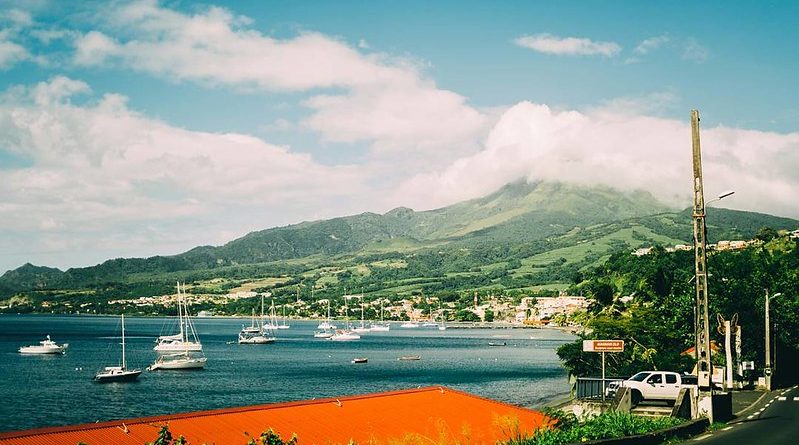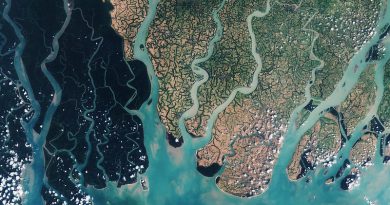The Deadly Volcano of Martinique
At the beginning of the 20th Century, St. Pierre – then the capital of Martinique – was a flourishing port city with a population of nearly 40,000. It was so cosmopoliton that it was dubbed the ‘Little Paris of the West Indies’. Mont Pelee, the island’s highest mountain, provided a scenic backdrop to the city.
In the Spring of 1902, sulphurous steam vents on Mont Pelee began emitting gases, and a crater lake started to fill with boiling water. Authorities dismissed it all as the normal cycle of the volcano, which had experienced harmless periods of activity in the past.
But on April 25 the volcano spewed a shower of ash onto St. Pierre. Some anxious residents sent their kids to stay with relatives on other parts of the island. The governor of Martinique, hoping to allay fears, brought his family to St. Pierre.
At 8am on Sunday, May 8, 1902, Mont Pelee exploded into a glowing burst of superheated gas and burning ash, with a force 40 times stronger that the later nuclear last over Hiroshima. Between the suffocating gases and the fiery inferno, St. Pierre was laid to waste within minutes.
The area devastated by the pyroclastic cloud covered about 8 square miles, with the city of St. Pierre taking its brunt. The cloud consisted of superheated steam and volcanic gases and dust, with temperatures reaching over 1000 °C. All of the buildings in the city were flattened and the entire population burned or suffocated to death.
Of the city’s 26,000-38,000 inhabitants, the sole survivor, a 25 year old prisoner named Augusta Cyparis, escaped with only minor burns – ironically, he owed his life to having been locked in a tomblike solitary-confinement cell at the local jail. While the cloud passed over the prison, cooking the interior like a kelm, the poor ventilation protected Ciparis from breathing the searing ash. Hot air mixed with fine ashes entered his cell through the door grating, despite his efforts in urinating on his clothing and stuffing it in the door. The heat lasted only a short moment, enough to cause deep burns on Sylbaris’ hands, arms, legs, and back, but his clothes did not ignite, and he avoided breathing the searing-hot air. After the eruption he sustained himself on a small bowl of water for three days until visitors searching the grounds heard his cries. Subsequently pardoned, “the prisoner of St. Pierre” spent the rest of his life displaying his scars in the Barnum and Bailey Circus, with the stage name Ludger Sylbaris.*
The most noticeable ruins from this catastrophe are those of the 18th-century theatre. While most of the theatre was destroyed, enough remains to give a sense of the former grandeur of this building, which once seated 800 and hosted theatre troupes from mainland France.*
The Musee Volcanalogique is small, but very interesting. Founded in 1932 by American vulcanologist Franck Perret, gives a glimpse of how devastating the eruption was.
A piece of metal here that was once the Cathedral tower’s cast-iron bell, was flattened it into saucer.
Pelee continued to smolder for months, but by 1904 people began to resettle the town, building among the crumbled ruins. Today the population is around 6,000.*
For the last 70 years, Mount Pelée has rested dormant in the Lesser Antilles of the Caribbean — providing an excellent opportunity for volcanologists and tourists to clamber up its slopes and hike the trail to the summit.
DIVING MARTINIQUE WRECKS
The shipwrecks on this island are quite distinct from any other Caribbean . The area contains at least eighteen shipwrecks, most of which were sunk on the same day – the day Mount Pelee erupted.
The suddenness of this calamity did not even permit ships at anchor in the Harbor of St. Pierre to make sail and escape.
Captain Whatter of the vessel Roddam, the only ship in the harbor to stay afloat, reported that he was talking to Joseph Plissono, who was in a boat alongside, when he saw a tremendous cloud of smoke and cinders enveloping the town and port in a sheet of flame and raining fire..
The Roraimu was a steal hulled Quebec Line steamship, and is the largest wreck in the bay. She was transporting a cargo of potassium when the eruption occurred. Her combustible cargo caught fire, and she burned for three days before sinking. Twenty-eight of her crew and all her passengers except a little girl and her creole nurse were killed.
The Grappler was a 860 ton cable repair steamer belonging to the West India and Panama Telegraph Company of London. According to the New York Times, she was one of the first ships to disappear after the eruption. The Grappler was lost with all hands aboard. She is now resting in approximately 105 feet of water.
The Raisinier is one of the shallowest wrecks in the bay, sitting in only 50 feet of water. This wreck is very photogenic. Divers can sometimes still find brass pins, but the wreck has already been picked pretty clean.
The burnt remains of the Roraimu sit upright with a slight tilt to her port side. She sits on a sloping bottom where her depth ranges from 160 to 205 feet. The Roraima is mostly intact except for her bow which has broken down and her stern which has split from the main wreckage.




